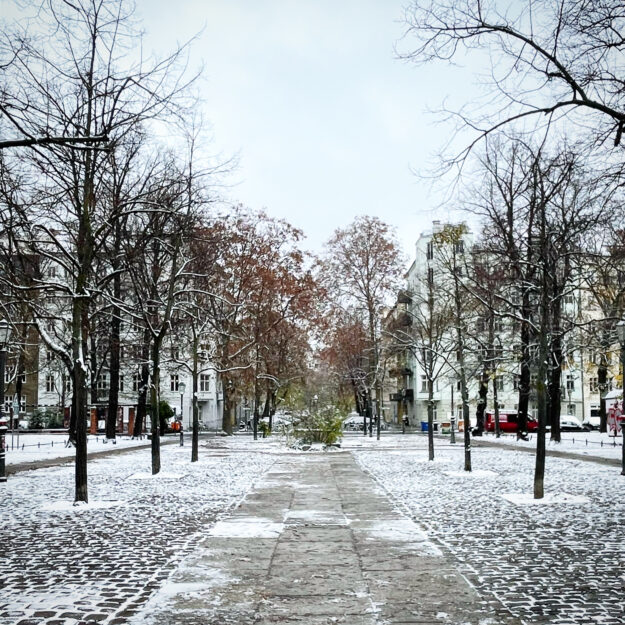View to the Landwehr Canal from Corneliusbrücke in Berlin Tiergarten.
Landwehr Canal from Corneliusbrücke
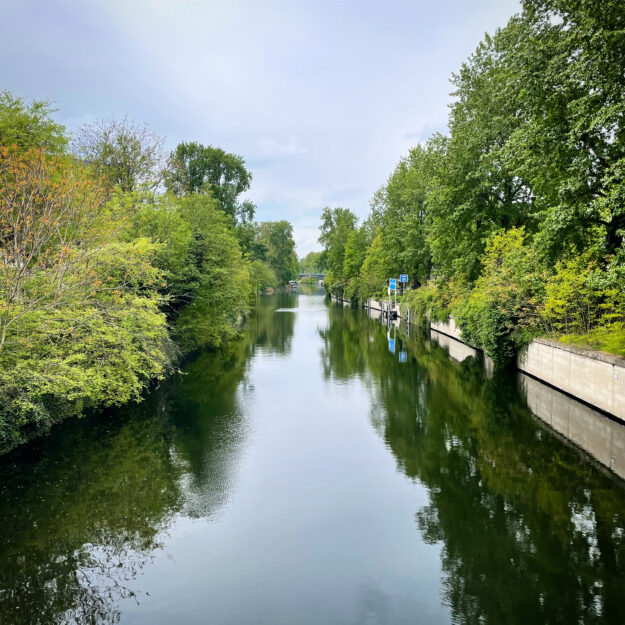

View to the Landwehr Canal from Corneliusbrücke in Berlin Tiergarten.
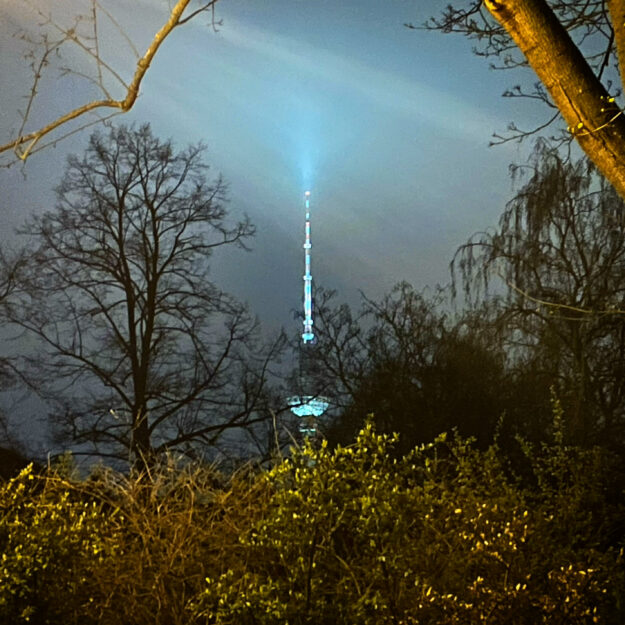
TV-Tower Berlin by Night - Photo:T.Bortels/nuberlin.com
Night view of the TV Tower from Zionskirchstraße on a cold but beautiful night in March. The trees are part of to Teutoburger Platz.
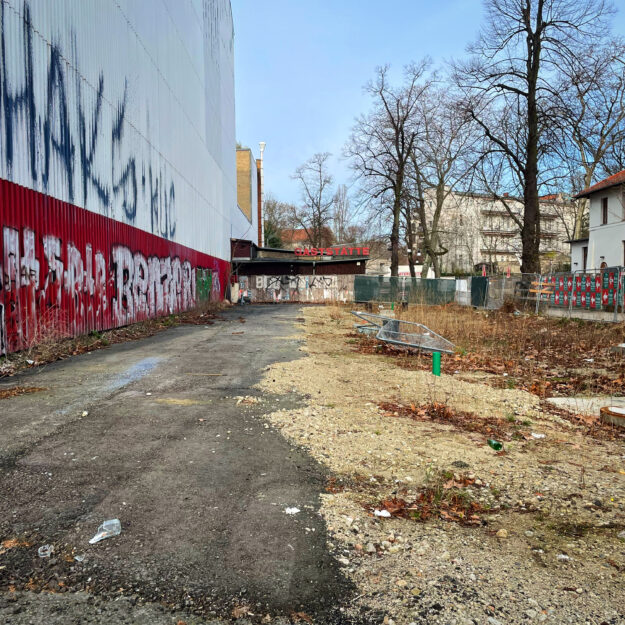
Construction work has been going on at the Prater on Kastanienallee in Prenzlauer Berg for years. And for years, it felt like things weren’t really progressing. But now the construction work seems to be coming to an end – at least that’s my impression when I occasionally take a look at the building site. I can’t say whether this corresponds to the actual situation. We will see.
Of course, this picture does not really show the beer garden / the Pratergarten, but just the entrance area of the Prater area.
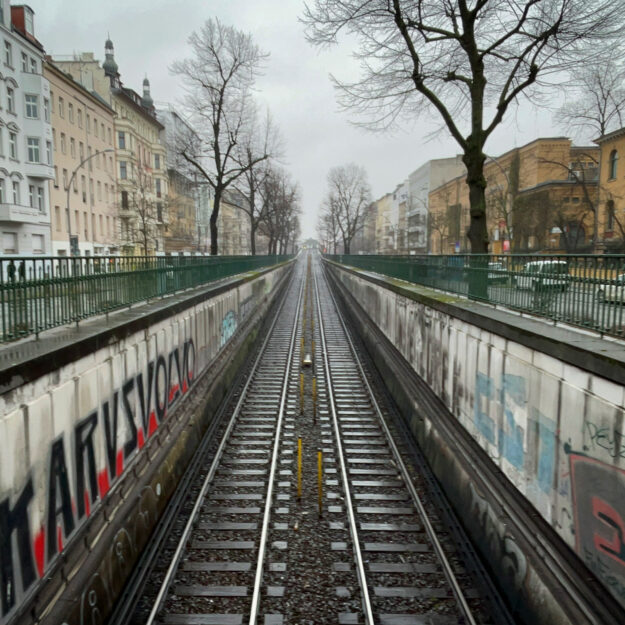
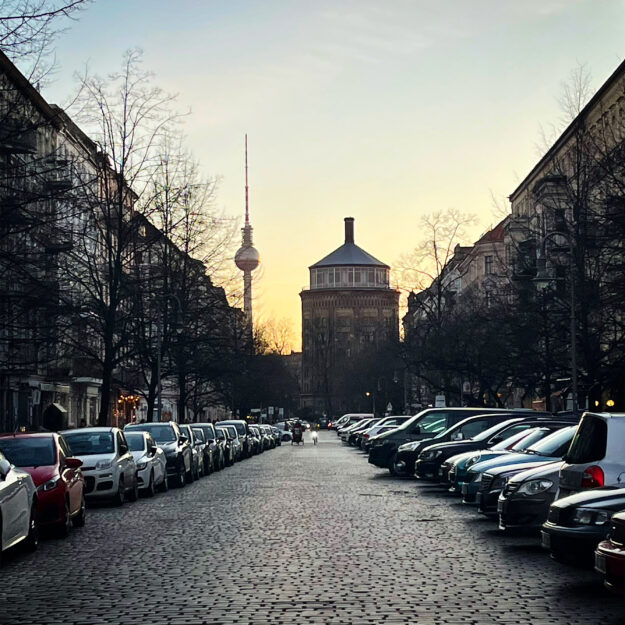
Rykestrasse in Prenzlauer Berg on a cold but beautiful Sunday afternoon at the end of January. View of the water tower, with the TV-Tower in the background.
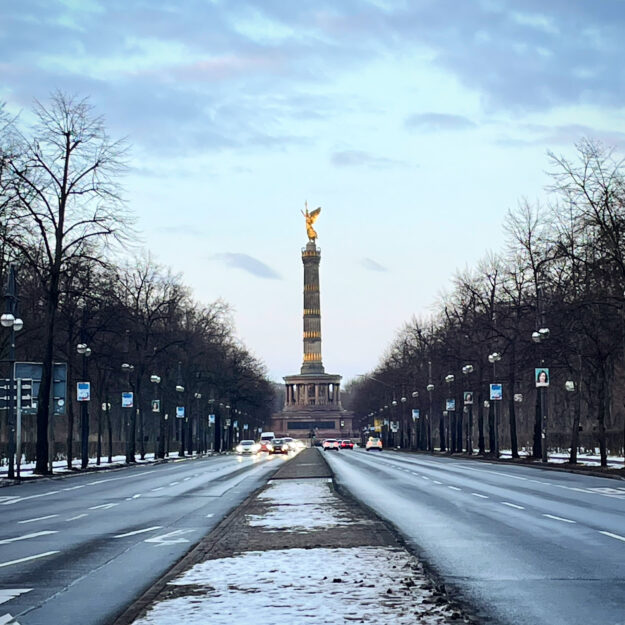
Berlin in mid-January. The days are getting longer again, it’s getting dark later. There are still the last remnants of snow in Tiergarten and Victoria towers atop the Victory Column Siegessäule.
Election posters can be seen on the lampposts – in Berlin, the Bundestag election will be repeated in many constituencies on February 11 due to various technical problems during the 2021 election.
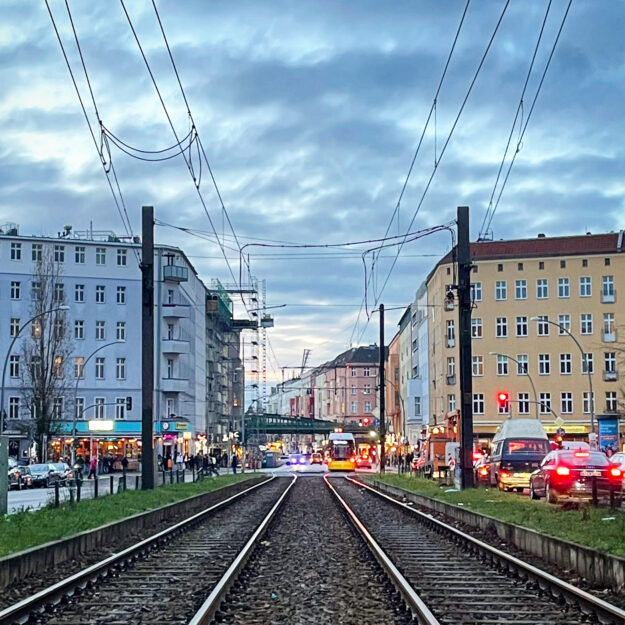
View down Eberswalder Strasse towards the Schönhauser Allee crossing on a rather warm-ish December evening. A tram of the metro line M10 is heading west, the tail lights of the evening traffic glow in the semi-darkness. One of the floodlight-towers of the stadium in Friedrich-Ludwig-Jahn-Sportpark can be seen in the background.
